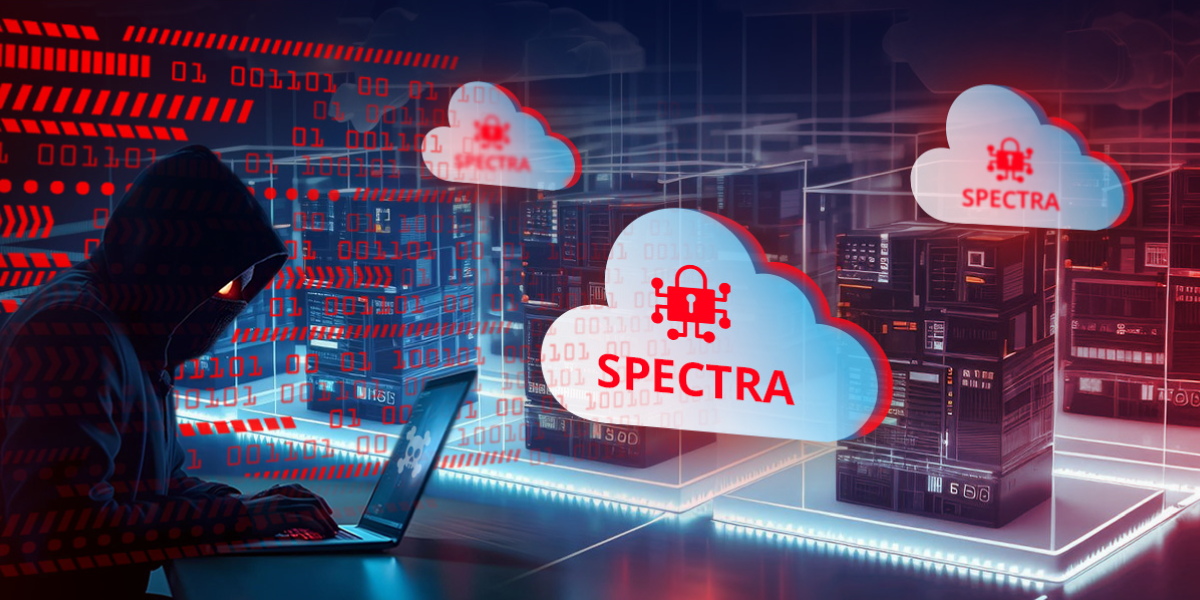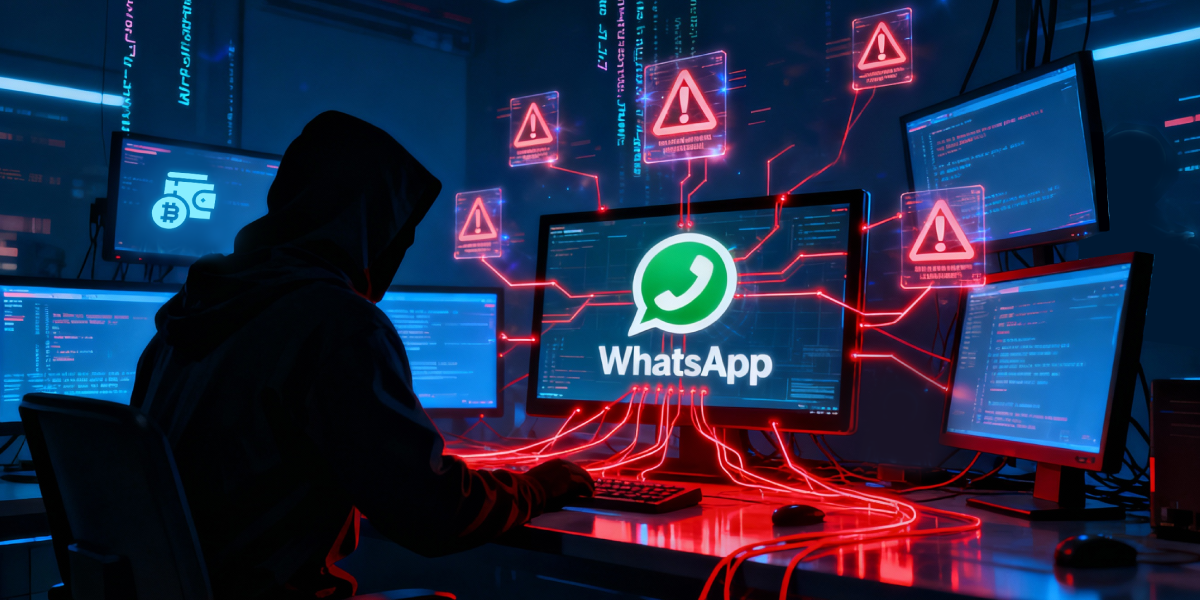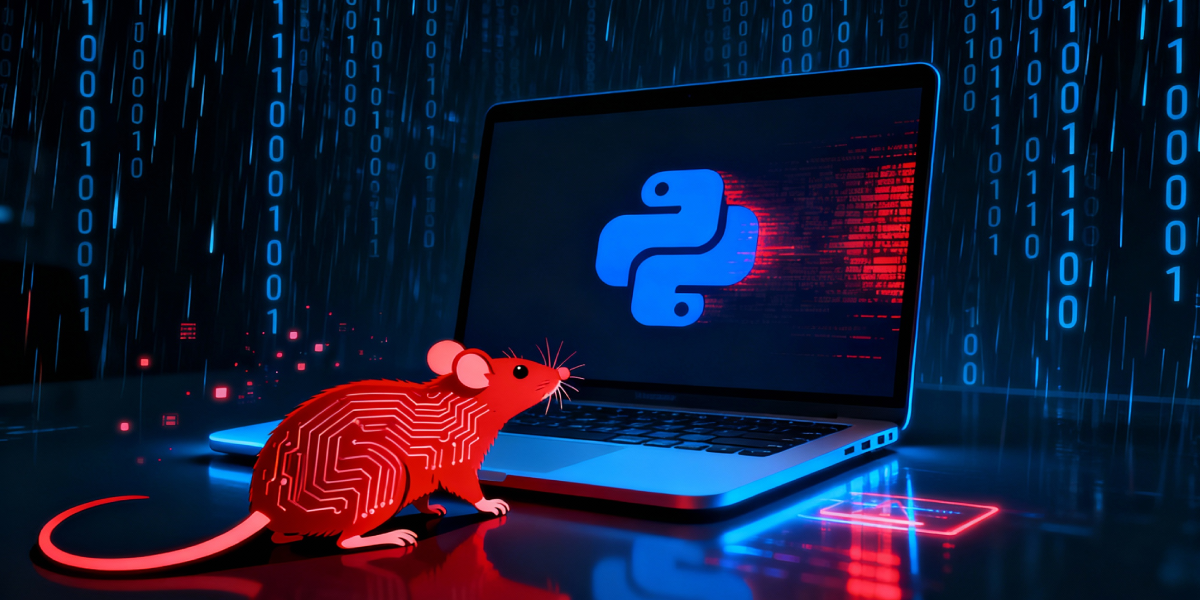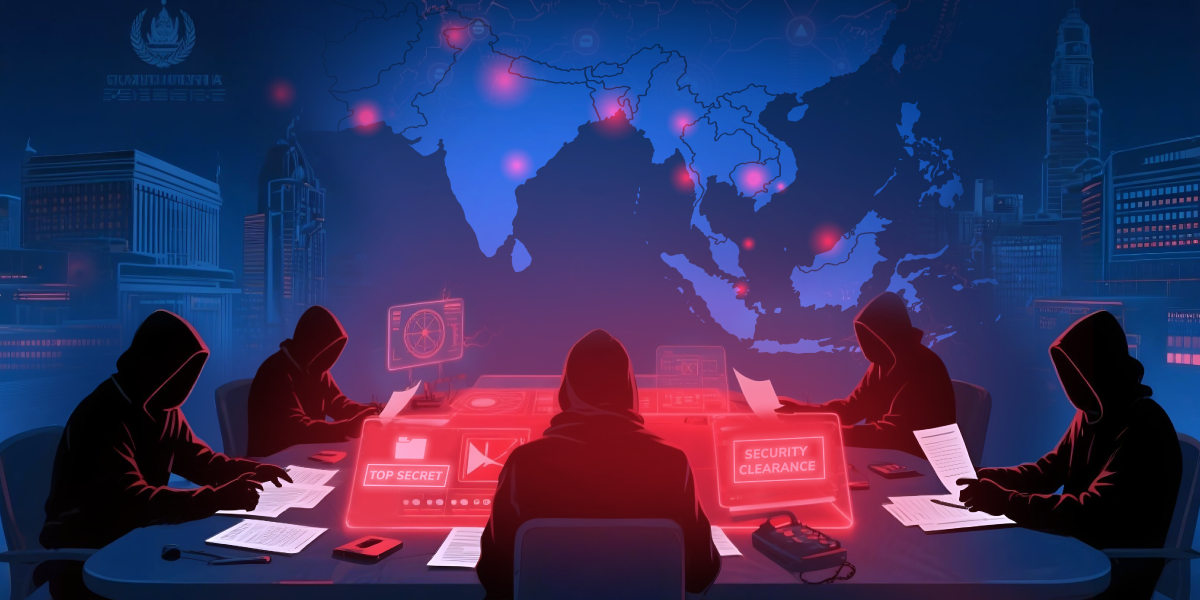Spectra Ransomware is a new ransomware seen in the wild since April 2025. We believe it evolved from the Chaos ransomware family which includes Yashma Ransomware, active since March 2022 and Blacksnake Ransomware, active since March 2023 also has similar methods like Spectra ransomware, which specifically targets Windows-based systems. Upon execution, it encrypts all files on the infected device and leaves behind a ransom note titled SPECTRARANSOMWARE.txt. The attackers demand a payment of $5,000 in Bitcoin within a 72-hour deadline. The Ransomware note warns the victim with a double extortion, combination of data encryption along with data theft.

The sample being analyzed is a 32-bit executable file compiled with Microsoft Visual Studio .NET.

Same as Yashma ransomware, Spectra ransomware also has forbiddenCountry method as the initial method which checks for the country using the current input language. If it is Azerbaijan or Turkey, it will terminate the execution.

Ransomware has a method which uses Getprocess API to enumerate the list of processes running on the host. During the execution, it checks whether the malware is already on the system by using the process name and process ID. If it is already running, then it will terminate itself.
Following to that in the next method it checks for svchost.exe in C:\Users\Username\AppData\Roaming, if it found then replace the malware with svchost.exe and in case if it not present in the location it copies the malware as svchost.exe. Along with that it also sleeps the current running threat for 200 milliseconds.

Using the registryStatup module achieves the persistence techniques by modifying the registry entry.

Ransomware uses the DisableTaskManager module and sets disableTaskMgr to “1”. This inhibits the use of TaskManager to kill the ransomware process.
| Backup Services Name | Back Up products |
| Backup Exec agent | Veritas Technologies |
| Veeam | Insight Partners |
| GX Fwd | GlobalXperts |
| TeamViewer | TeamViewer |
| Acronis Agent | Acronis International GmbH |
| BackupExec RPC Service | Arctera |
| PDVFS service | PDVFS service |
| DefWatch | Symantec and Norton |
| GxVss | GlobalXperts |
Table 1: Backup Services targeted by the ransomware
The method stopBackupServices is used to stop a list of specified backup or security-related services, including backup programs, antivirus software, and system monitoring tools.
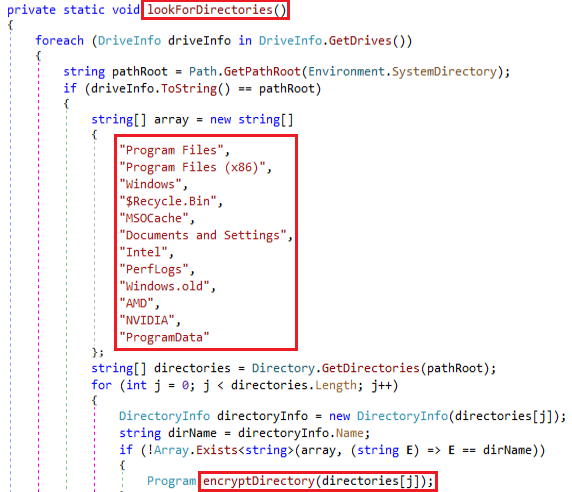
Ransomware uses the lookForDirectories method to scan all drives on the system and check whether each drive is the system drive, and then conditionally encrypt directories by excluding common system folders using the following method.
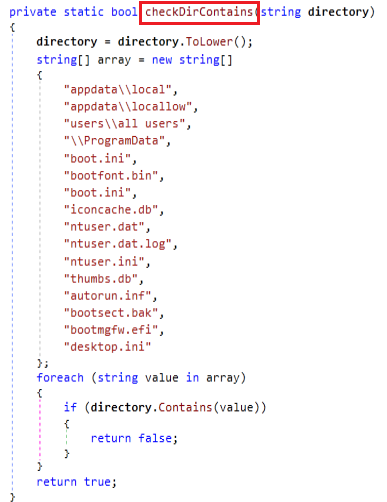
Once after filtering the folder for encryption ransomware uses CheckDirContains method for filtering system directories and critical files from processing in order to avoid damaging the OS or triggering alerts when scanning/encrypting files. It loops through an array of known system file paths and filenames.

Based on the folders selected in the last method, the encryptDirectory method scans a specified folder, encrypts valid files, and recursively processes subdirectories. It retrieves all files in the directory and processes them in parallel. For each file, if its extension matches any of them mentioned in Table 2, it proceeds to encrypt it and if the name is “SPECTRARANSOMWARE.txt” then it doesn’t encrypt that file alone. Depending on the file’s size, it either encrypts it using a standard AES-RSA hybrid method (AES_Encrypt) or a specific method for large files (> 1.79 GB) which replaces the contents with “?” (AES_Encrypt_Large). Using the CreatePassword method (Fig 8), generates a random alphanumeric key containing letters (upper + lower), digits, and symbols and which is used as a seed to RSA encryption. Once encryption begins, a message file is dropped in the directory.
| .txt | .dib | .xlsb | .pot | .mde | .aspx | .wmv | .json | .ai4 | .xlm | .sql | .pdb |
| .jar | .dic | .7z | .xlw | .mdf | .html | .swf | .gif | .ai5 | .xlt | .mdb | .ico |
| .dat | .dif | .cpp | .xps | .mdw | .htm | .cer | .log | .ai6 | .xltm | .php | .pas |
| .contact | .divx | .java | .xsd | .mht | .xml | .bak | .gz | .ai7 | .svgz | .asp | .db |
| .settings | .iso | .jpe | .xsf | .mpv | .psd | .backup | .config | .ai8 | .slk | .vmdk | .accdw |
| .doc | .7zip | .ini | .xsl | .msg | .accdb | .vb | .arw | .tar.gz | .onepkg | .adp | |
| .docx | .ace | .blob | .kmz | .myi | .xla | .bay | .m1v | .ascx | .dmg | .accde | .ai |
| .xls | .arj | .wps | .accdr | .nef | .cub | .p7c | .sln | .asm | .ps | .jsp | .ai3 |
| .xlsx | .bz2 | .docm | .stm | .odc | .dae | .exif | .pst | .asmx | .psb | .safe | .mkv |
| .ppt | .cab | .wav | .accdt | .geo | .indd | .vss | .obj | .avs | .tif | .tab | .avi |
| .pptx | .gzip | .3gp | .ppam | .swift | .cs | .raw | .xlam | .bin | .rss | .vbs | .apk |
| .odt | .lzh | .webm | .pps | .odm | .mp3 | .m4a | .djvu | .cfm | .key | .xlk | .lnk |
| .jpg | .tar | .m4v | .ppsm | .odp | .mp4 | .wma | .inc | .dbx | .vob | .js | .xltx |
| .mka | .jpeg | .amv | .1cd | .oft | .dwg | .flv | .cvs | .dcm | .epsp | .rb | .pptm |
| .mhtml | .xz | .m4p | .3ds | .orf | .zip | .sie | .dbf | .dcr | .dc3 | .crt | .potx |
| .oqy | .mpeg | .svg | .3fr | .pfx | .rar | .sum | .tbi | .pict | .iff | .xlsm | .potm |
| .png | .torrent | .ods | .3g2 | .p12 | .mov | .ibank | .wpd | .rgbe | .onepkg | .exr | .p7b |
| .csv | .mpg | .bk | .accda | .pl | .rtf | .wallet | .dot | .dwt | .onetoc2 | .kwm | .pam |
| .py | .core | .vdi | .accdc | .pls | .bmp | .css | .dotx | .f4v | .opt | .max | .r3d |
Table 2: Extensions targeted by this Ransomware

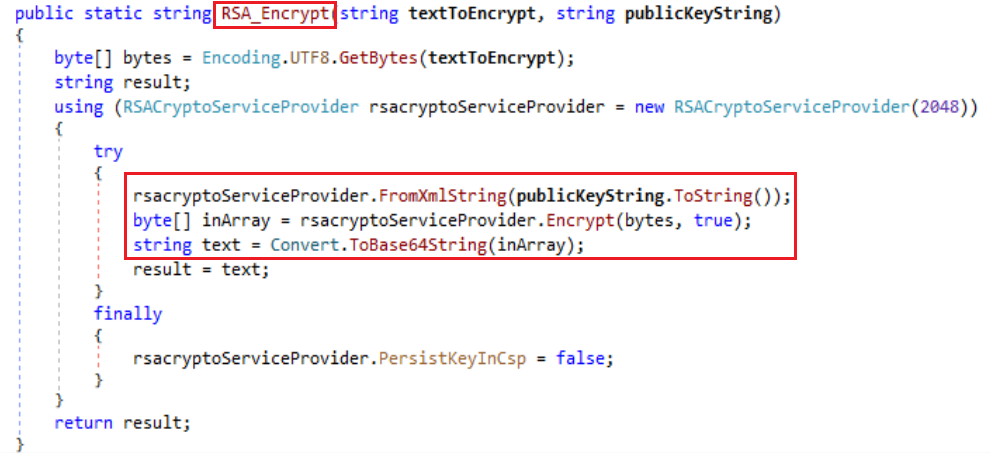
A randomly generated AES key (used to encrypt files) is first converted to bytes, then encrypted using a hardcoded RSA public key. Thus the file is encrypted using AES encrypt method and the symmetric key is encrypted using RSA encryption.
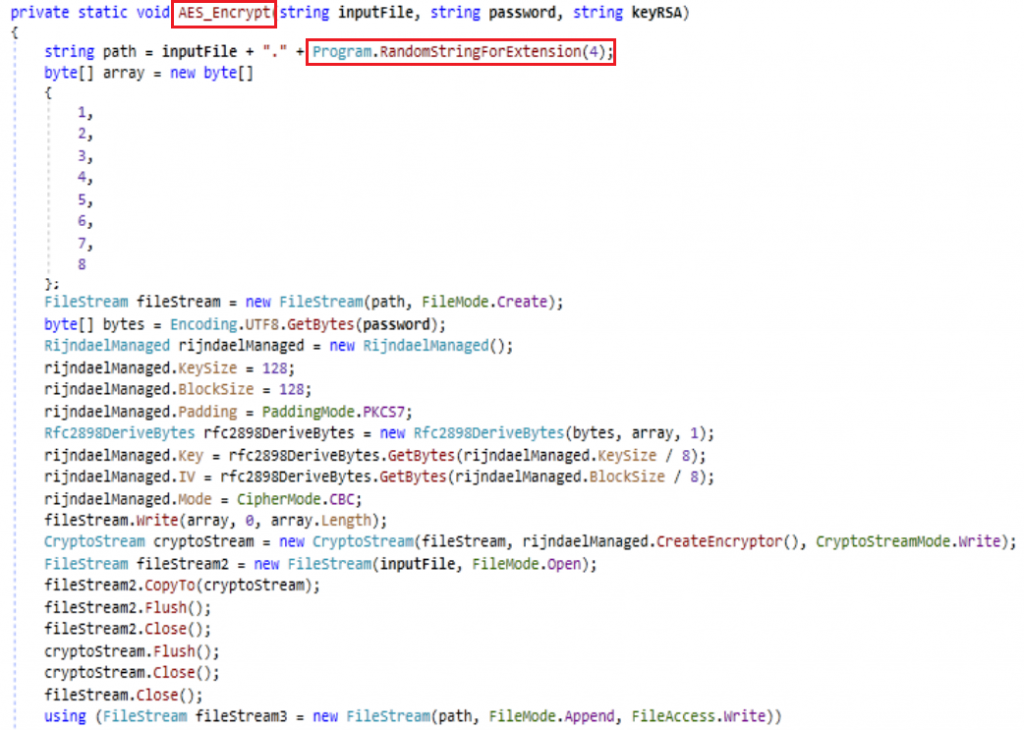
The file is encrypted and the RSA key is appended to the file. Along with that it renames the file path with the random extension.
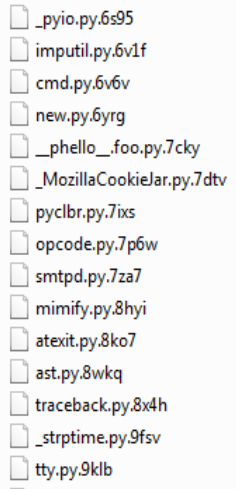
From the above image we can find that all the folders are replaced with a random string of 4 letters which is different for all the files.



Once the file encryption is completed ransomware uses addAndOpenNote method to create a text file in all the encrypted folders as the ransomware note.
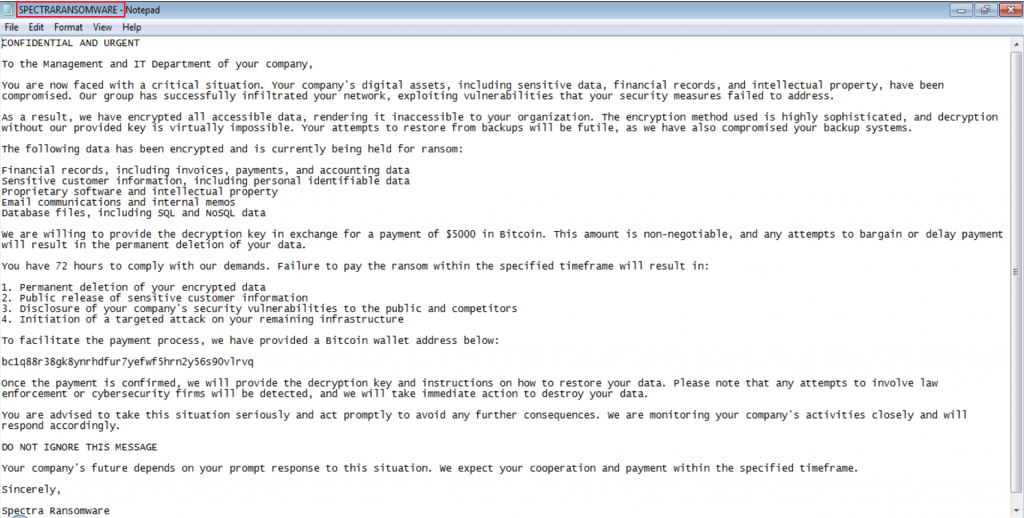
The above image is the SPECTRARANSOMWARE.txt which has a ransomware note that all the files are encrypted and also has contact details for receiving the key to decrypt. Also has a warning to contact within 72 hours.

Finally, ransomware changes the wallpaper to the above image using the SetWallpaper module.
With the increasing risk of malware attacks, it’s important to take steps to protect your data. Using a reliable security product like K7 Total Security and keeping it updated is crucial to defend against these threats.
IOCs
| Hash | Detection Name |
| 559B0D30B7BBF2D514C01E275FADBC90 | Trojan ( 005ac4d71 ) |

